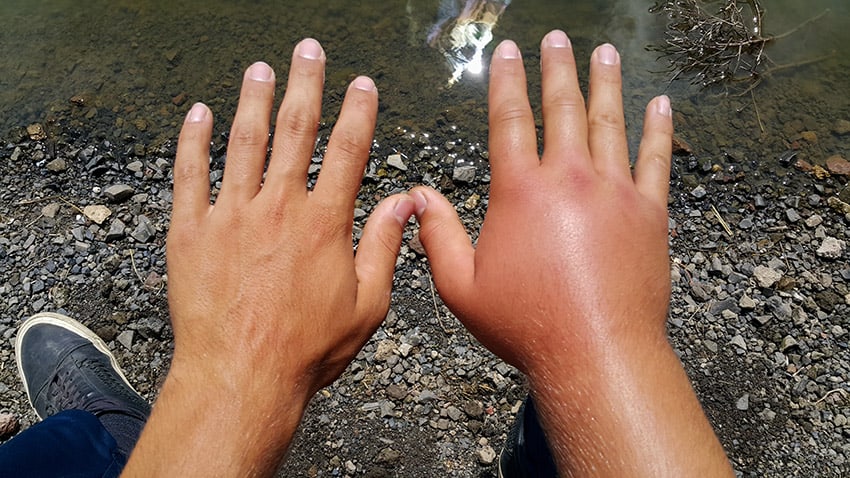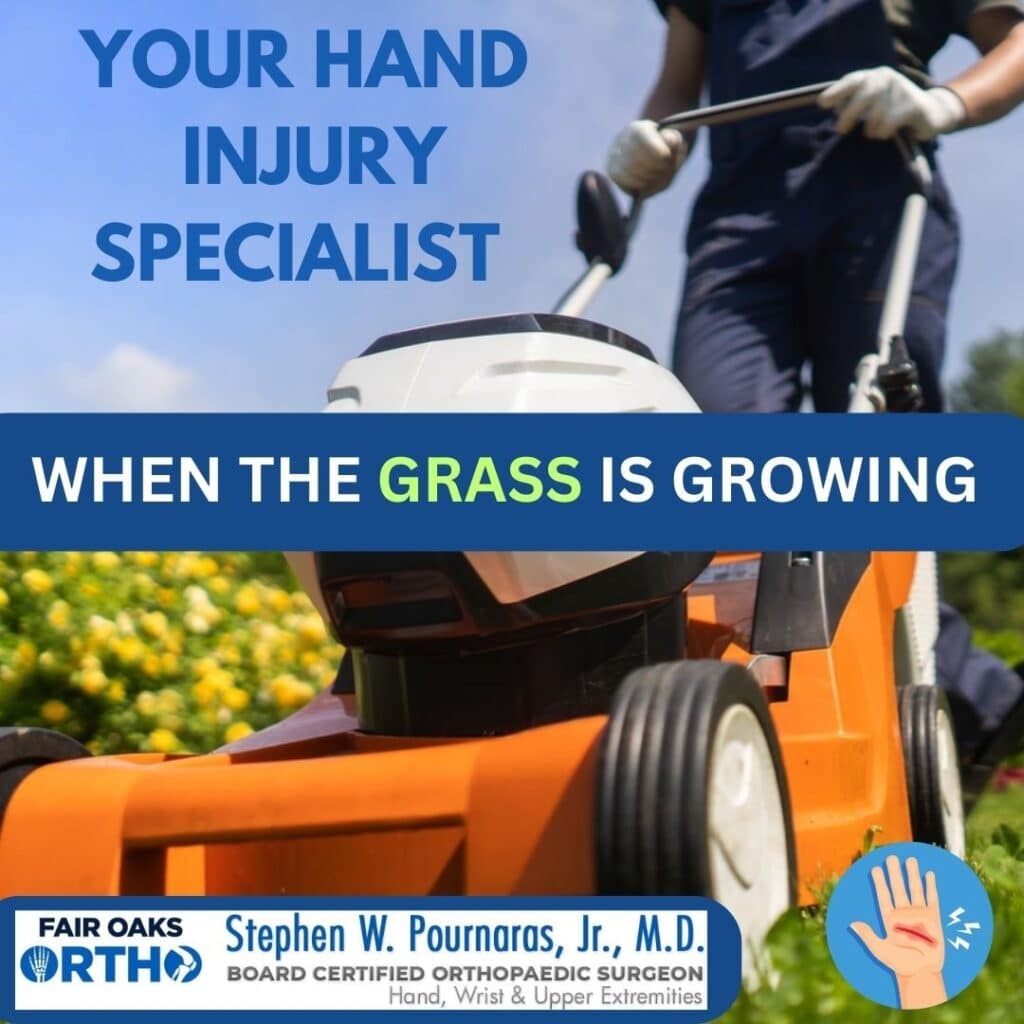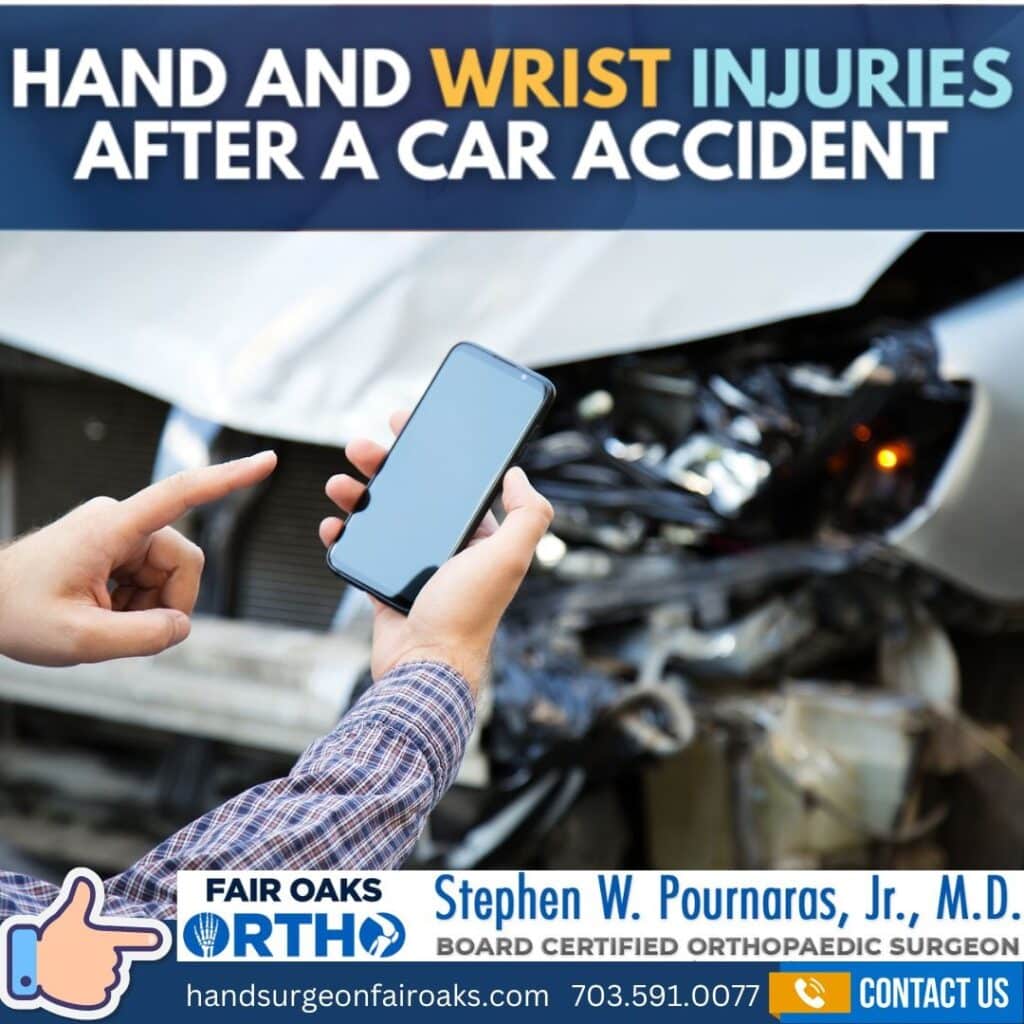
Northern Virginia Hand Surgeon Dr. Stephen W. Pournaras uses a wide range of treatments for hand injuries and lacerations, focusing on the restoration of function, alleviation of pain, and improvement in your overall health.
Minor injuries may only require basic first aid. In contrast, more severe injuries may require surgery, physical therapy, and extended recovery.
It’s crucial for you to call us immediately for severe hand injuries to receive the best care and minimize the risk of long-term problems.
Hand injuries and lacerations are common and can range from minor cuts to severe injuries affecting bones, tendons, nerves, and blood vessels. Here are some of the common types of hand injuries and lacerations:
Cuts and Abrasions
Simple Lacerations: Superficial cuts that may only affect the skin. They typically require cleaning and possibly stitches to aid healing.
Complex Lacerations: Deeper cuts may involve tendons, nerves, or blood vessels. These often require more intricate medical attention, including surgery.
Tendon Injuries
Flexor Tendon Injuries: These tendons and lacerations help bend the fingers and thumb. Injuries can occur from a deep cut or as part of a more complex trauma. They often require surgical repair to restore function.
Extensor Tendon Injuries: These tendons straighten the fingers and thumb. Injuries can be caused by cuts or blunt trauma and may also need surgical intervention.
Dr. Pournaras’s approach to hand treatments is personalized, based on a thorough evaluation of your injury, overall health, and the specific needs for the best healing and recovery.
Debridement: Cleaning the wound by removing foreign material and dead tissue to prevent infection and promote healing.
Suturing: Closing lacerations with stitches to ensure proper healing and minimize scarring.
Skin Grafts and Flaps: Transplanting skin from another part of your body (graft) or moving skin with its blood supply from a nearby area (flap) to cover large wounds.
Primary Repair: Immediate suturing of the tendon ends after an injury.
Delayed Repair: Suturing the tendon ends after a short delay, sometimes involving more complex procedures like grafting if the ends can’t be directly joined.
Direct Nerve Repair: Surgically reconnecting the ends of a severed nerve.
Nerve Grafting: Using nerve segments from another part of the body to bridge gaps in damaged nerves.
Reduction: Realigning broken bone fragments.
Immobilization: Using casts, splints, or braces to keep bones in place during healing.
Internal Fixation: Stabilizing fractures with screws, plates, pins, or wires.
External Fixation: Using a stabilizing frame outside the body to hold bones in the correct position.
Joint injuries can include sprains (ligament injuries) and more severe damage leading to joint instability or arthritis. Treatment depends on the severity and might involve immobilization or surgery.
Joint Reduction: Realigning dislocated joints.
Joint Reconstruction: Surgical reconstruction for severely damaged joints.
Arthrodesis (Fusion): Surgically fusing a joint to reduce pain and improve stability.
Injuries to the nerves can result in loss of sensation or motor function in parts of the hand. Nerve injuries often require microsurgical repair, primarily if a complete cut occurs.
Fractures: Breaks in the bones of the hand can result from direct trauma or crushing injuries. Treatment may involve splinting, casting, or surgical fixation.
Dislocations: The bones in the hand, particularly in the fingers, can become dislocated from their normal alignment, often requiring medical intervention to realign.
These occur when the hand or fingers are subjected to a high degree of force, potentially damaging multiple structures, including bones, tendons, and blood vessels. Crush injuries are complex and require comprehensive medical care.
Partial or complete amputation of fingers or the hand is a severe injury that can result from accidents with machinery, tools, or due to traumatic events. Reattachment or reconstructive surgery may be possible in some cases.
Tissue Transfers: Moving tissues, including skin, muscle, or bone, from one part of the body to the hand to restore its form and function.
Replantation: Reattaching amputated parts involving reconnection of bones, tendons, nerves, and blood vessels.
Physical Therapy: Exercises and treatments to regain strength, flexibility, and function.
Occupational Therapy: Helping patients adapt to injuries and regain the ability to perform daily activities.
Medications: Anti-inflammatories and pain relievers to manage discomfort.
Corticosteroid Injections: To reduce inflammation in specific conditions.
Arthroscopy: Using small incisions and a camera to diagnose and treat joint issues.
Endoscopic Techniques: For certain conditions, such as carpal tunnel syndrome, small incisions, and specialized instruments are used.
WHEN THE GRASS IS GROWING!
Most lawnmower injuries result from accidents;
some hand issues can happen from the stress of pushing a mower.
If you have a hand injury or chronic condition such as arthritis, carpal tunnel, or tendonitis, please contact Fair Oaks Orthopedics. Dr. Pournaras and our highly trained staff can help you with your road to recovery.
Call Us Today To Make An Appointment.
Make Your Appointment Today
Fair Oaks Orthopedics – Fairfax,VA




